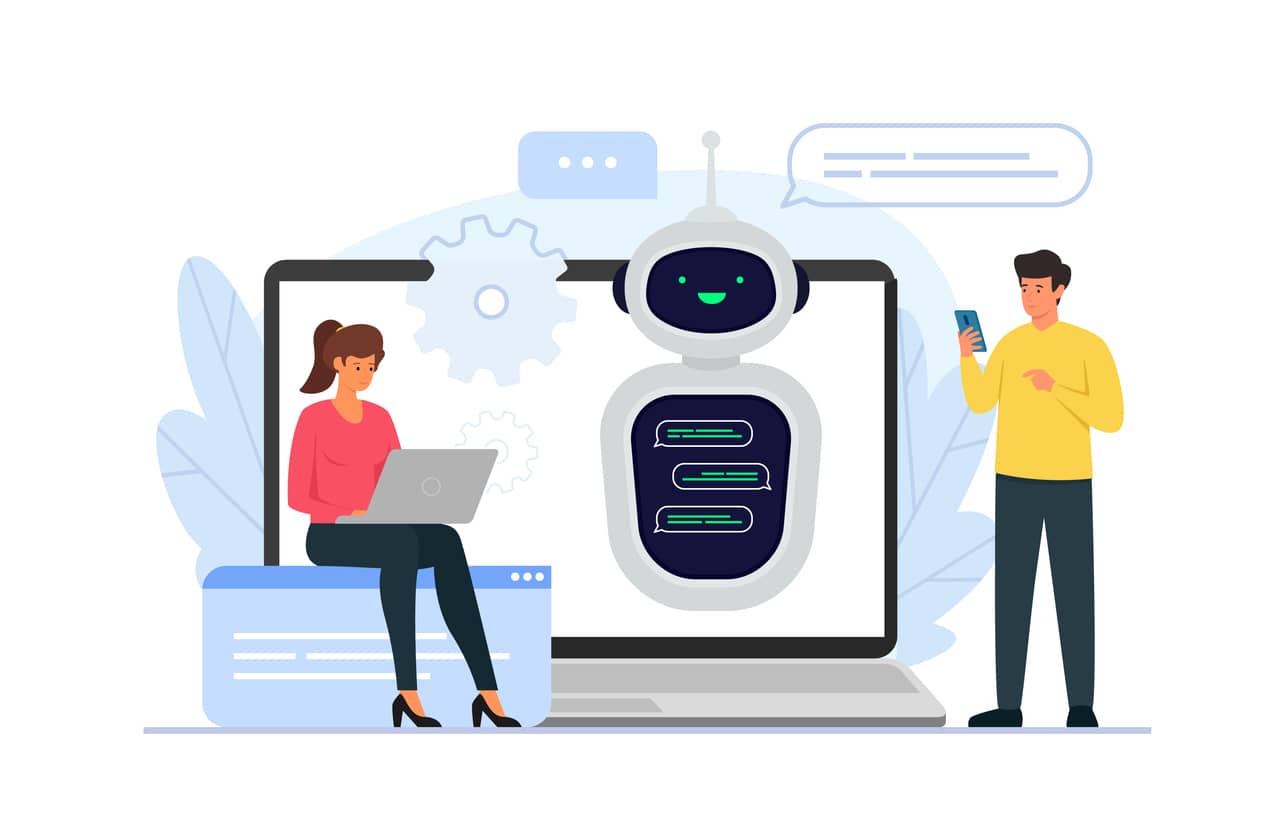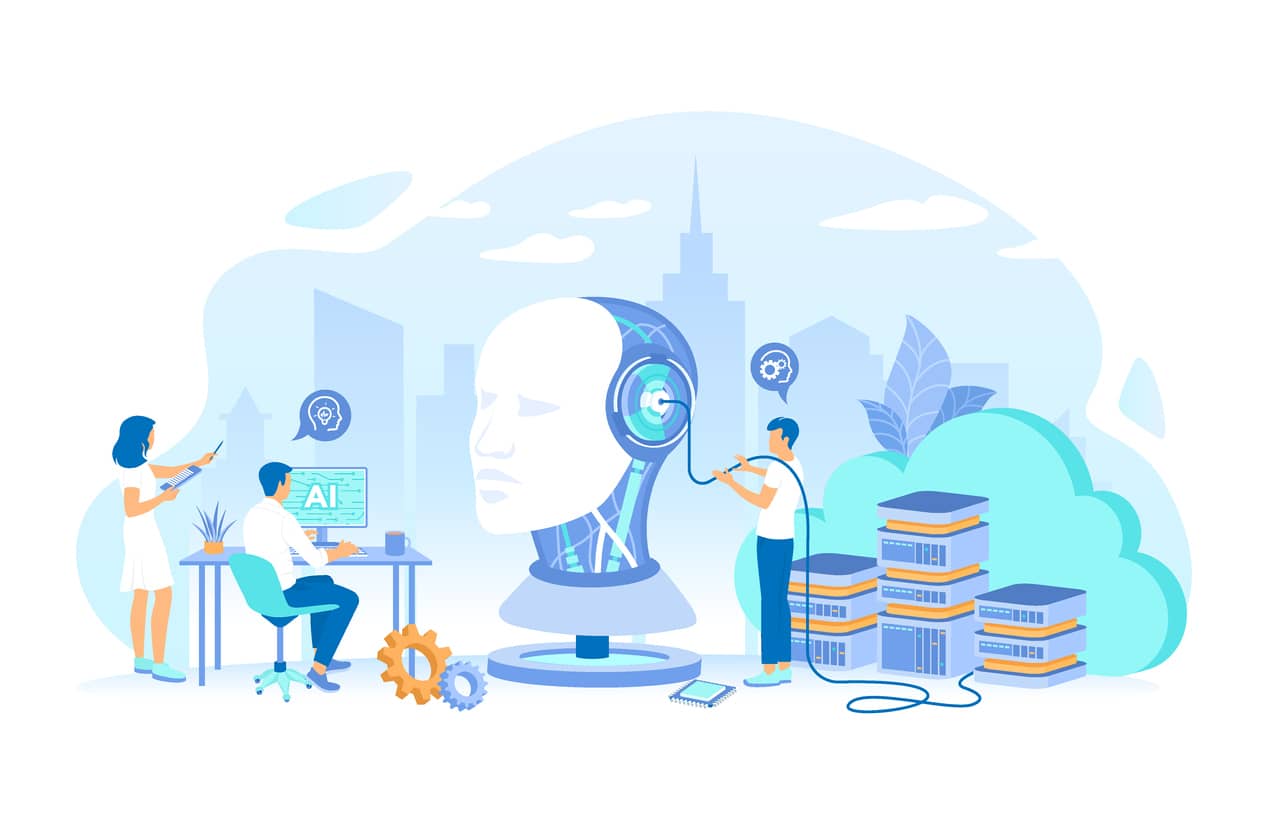What is an AI productivity tool?
AI productivity tools are software applications integrated with artificial intelligence that aid in optimizing work processes, facilitating more intelligent decision-making, and augmenting output. These tools harness AI algorithms to perform tasks autonomously, ranging from data analysis and information retrieval to task automation and predictive analytics. They are designed to adapt, learn, and evolve, refining their functionalities to suit specific user requirements.
How have AI productivity tools developed over time?
AI productivity tools have evolved significantly, starting from the mid-20th century’s early AI research. Initially, AI aimed to mimic human thinking for complex problem-solving. In the 1990s, expert systems emerged, offering specialized advice in specific fields.
Advancements in computing power and machine learning led to task automation, saving time and reducing errors. Natural language processing (NLP) improved human-machine communication, giving rise to virtual assistants and language translation tools.
Today, AI productivity tools leverage sophisticated algorithms for data analysis, prediction, and decision-making across various domains like project management, communication, content creation, and data analysis.
These tools are essential in modern workplaces, constantly evolving to enhance productivity and efficiency. They continue to harness AI advancements like deep learning, promising even more innovative solutions for future work environments.
Why use AI productivity tools?
Adopting AI productivity tools heralds a transformative shift in how businesses operate. These tools empower organizations to save time, enhance accuracy, and unlock new productivity levels. Automating repetitive tasks, such as scheduling meetings or organizing data, frees up valuable time for teams to focus on high-value initiatives. AI-driven insights enable data-driven decision-making, driving efficiency across various departments.
There is ample evidence showcasing how AI productivity tools significantly save employees time across various tasks and functions within organizations:
Automating Repetitive Tasks: AI tools are revolutionizing how we handle routine and repetitive tasks. For instance, they streamline data entry, scheduling, and email categorization. The McKinsey Global Institute highlights that automation could result in up to a 20% reduction in work time for such tasks
AI-Enhanced Search and Information Retrieval: Advanced AI-powered information retrieval features in platforms like Microsoft 365 or specialized enterprise search engines significantly enhance employees’ ability to find necessary information quickly.
Workers are wasting precious time looking for information. In a Microsoft survey of 31,000 people across 31 countries, “62% of survey respondents say they struggle with too much time spent searching for information in their workday.”
Improving Decision-Making: AI-driven analytics and data processing tools are essential for rapidly analyzing large datasets. This technology aids employees in making well-informed decisions more swiftly, thus reducing decision-making time substantially.
Enhanced Collaboration: AI integration in communication and collaboration tools, such as Slack or Microsoft Teams, enables faster interactions, smoother information exchange, and more efficient workflows. This represents a significant time-saving improvement over traditional communication methods.
AI-Powered Personal Assistants: AI-driven virtual assistants, including chatbots and voice-activated assistants like Siri or Cortana, effectively handle inquiries, manage schedules, and execute simple tasks. This advancement allows employees to allocate more time to complex or strategic tasks.
AI-Driven Content Creation: AI-equipped tools such as Grammarly or Canva aid writing, editing, and designing. These tools reduce the time spent on such tasks and enhance the overall quality of the output. Many platforms integrate content creation technologies directly to save time switching between apps. For example, Powell Intranets contribution assistant Powell Buddy allows intranet content creators to create content instantly thanks to generative AI.
How to choose the perfect AI productivity tool?
Selecting the ideal AI productivity tool hinges on understanding and aligning specific organizational needs with the tool’s features. Consider usability, integration capabilities with existing systems, scalability, and security measures. Additionally, evaluate the tool’s adaptability to your workflow and its potential to deliver tangible improvements in productivity and efficiency.
10 of the best AI productivity tools in 2023
This section highlights the top 10 AI-driven tools that are revolutionizing work efficiency across diverse industries. Discover how these cutting-edge solutions are reshaping workflows and empowering businesses with their innovative capabilities.
Automation tools
- Zapier: An automation tool that stands out for its ability to seamlessly integrate with various applications, simplify workflows, and automate repetitive tasks across different platforms. It empowers users to create custom integrations without requiring coding skills.
- Microsoft Power Automate: Tailored for Microsoft applications, Power Automate empowers users to automate workflows effortlessly. Its AI capabilities streamline processes between preferred apps and services, amplifying productivity within the Microsoft ecosystem.
- Powell Governance: Simplifies IT governance tasks in Microsoft 365 via automation. Its Campaigns feature allows IT Teams to create workflows, reducing workload and ensuring effective use of Microsoft Teams. The Powell Governance Bot automates notifications for inactive teams, prompting corrective actions from team owners. This ensures adherence to guidelines and minimizes IT team workload. Overall, these automated features enable continuous health checks and adjustments, delivering reports triggered by Campaigns’ automated scenarios.
Communication tools
- Slack: Utilizing AI advancements, Slack revolutionizes team interactions and information sharing. Its AI-driven features enhance collaboration, streamline communication, and improve team productivity.
- Zoom: Redefining virtual meetings, Zoom integrates AI to deliver enhanced video conferencing experiences. This AI-powered platform facilitates effective virtual collaboration, making remote interactions more engaging and productive.
- Powell Intranet: Simplifies information retrieval for Microsoft 365 users, leveraging AI-assisted search within the intranet and beyond. With Powell Buddy, your personal assistant for content creation, crafting engaging titles, descriptions, and full-bodied articles becomes effortless. From News to HR Policies, Powell Buddy seamlessly assists in populating your intranet with meaningful content.
Content creation tools
- OPENAI: Harnessing generative AI, OPENAI enables content creation, spanning from crafting compelling text to generating visually appealing video content. Its AI-powered tools aid in creating captivating and engaging content.
- Grammarly: Powered by AI, Grammarly enhances written communication by suggesting real-time corrections and improvements. This writing assistant ensures polished and error-free content across various platforms.
- Canva: Leveraging AI technology, Canva simplifies graphic design, enabling users to create visually stunning content effortlessly. Its intuitive interface and AI-driven features make designing captivating visuals hassle-free.
- Lumen5: Transforming text into engaging video content, Lumen5 utilizes AI to simplify video creation for various purposes. This tool streamlines the process of turning textual content into visually appealing videos.
As the landscape of AI productivity tools continues to evolve, these selections showcase how technology augments productivity across diverse domains. The impact of AI on internal communications, collaboration, and productivity is profound.
When considering these tools, evaluate their features, usability, and seamless integration into your workflow. The best AI productivity tool is one that aligns with your organization’s goals and significantly enhances overall efficiency.
It can be tempting for organizations to collect different tools to handle specific tasks. However, having many tools can make things complicated and hard to manage. Instead, look for platforms that can do many things in one place. For example, in 2023, it’s wise to find an intranet—a central hub for your company—that uses AI to help create content and find information quickly. This platform combines different functions, like AI features, into one system. It makes work smoother because everything works together. When everything is in one place, it’s easier to use AI effectively and make work more organized and productive.
In summary, AI productivity tools hold immense potential to revolutionize how businesses operate, making workflows smoother, making more thoughtful decisions, and having more impactful outcomes. Embrace the power of AI-enabled tools to propel your organization toward greater productivity and success in the ever-evolving digital landscape 2023.

